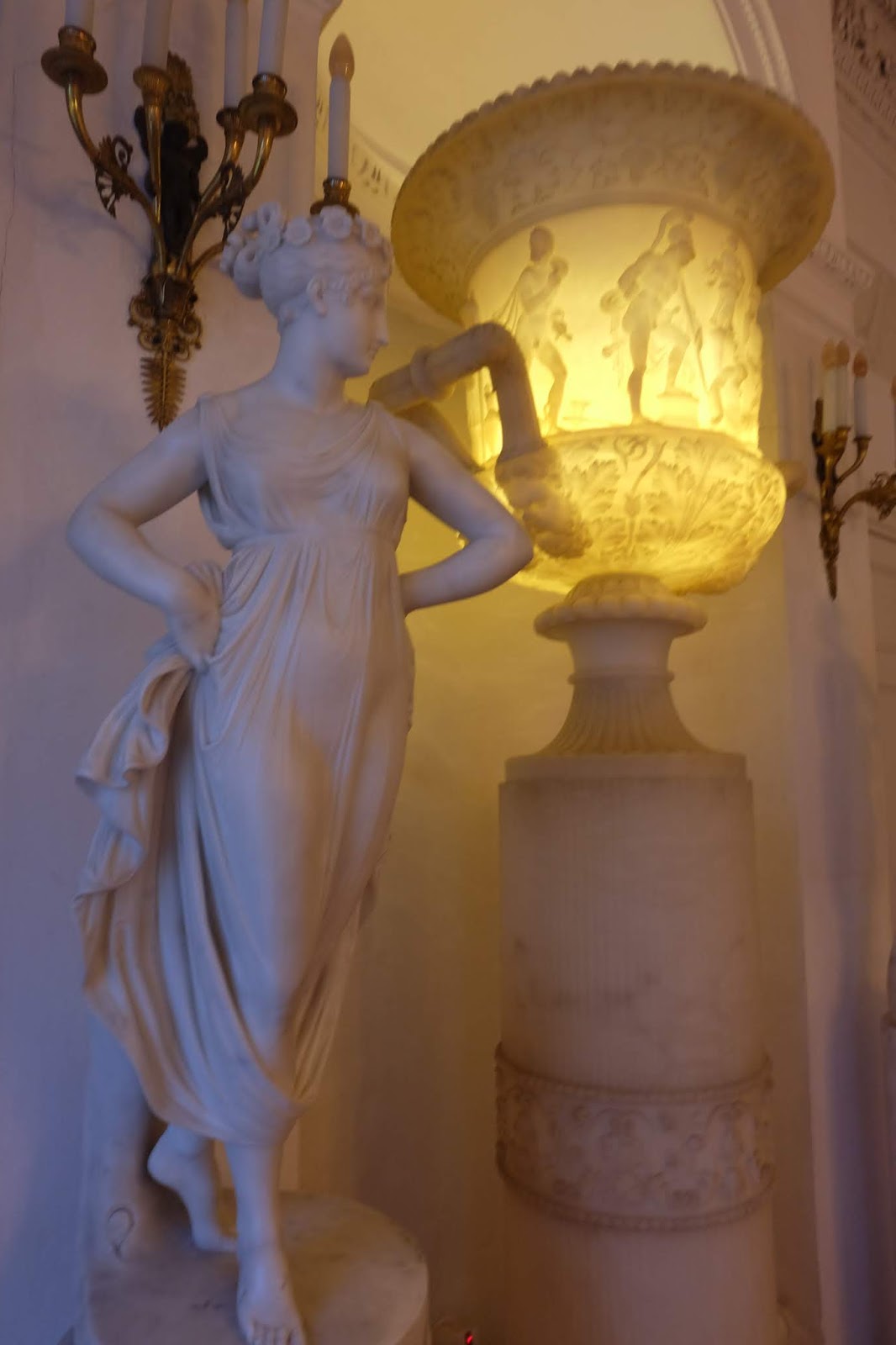DATOKEEHUACHEE@GMAIL.COM
PHOTOS BY CANON
SOESTDIJK PALACE WAS FORMER HUNTING LODGE OF TEH KING STAD-HOLDER WILLIAM III WHO HAD IT BUILT IN 1634.
THE EXTERIOR AND INTERIOR WERE MOSTLY FINALISED BY THE PRINCE OF ORANGE WHO BECAME KING WILLIAM II AND HIS WIFE ANNA PAULOVANA WHO MOVED AND LIVED HERE IN 1818.
PRINCE WILLIAM WAS GIVEN THE PALACE BY THE DUTCH NATION IN GRATITUDE FOR HIS HEROIC DEEDS DURING THE CAMPAIGN AGAINST NAPOLEON.
THIS PALACE IS A REAL ROYAL RESIDENCE AND NEVER A MUSEUM. IT WAS THE RESIDENCE OF QUEEN JULIANA AND PRINCE BERNHARD WHO BOTH DIED IN 2004.
QUEEN JULIANA AND PRINCE BERNHARD LIVED HERE FOR NEARLY 70 YEARS. THE PREVIOUS QUEEN BEATRIX AND HER SISTERS GREW UP HERE.
DANIEL MANTZ AND DATO KEE HUA CHEE
DATO KEE HUA CHEE OUTSIDE SOESTDIJK PALACE
FRONTAL VIEW OF SOESTJDIJK PALACECUTE CHERUB IN GARDEN
WINTRY
RESTAURANT
PALACE FROM REAR
DATO KEE HUA CHEE IN SOESTDIJK PALACE IN HOLLAND
WEST WING
FRONT
MAIN ENTRANCE
CUTE BUNNIES
OLD PHOTOS LINING THE WALLS
LONG CORRIDOR
TURKISH ROOM
ANTE CHMABER TO WHITE DINING ROOM
QUEEN JULIANA USEDC TO DINE HERE WITH FELLOW STUDENTS FROM UNIVERSITY
WHITE DINING ROOM
EMPIRE SALON
EMPIRE SSALON BEST PRESERVED
BEST WAY TO ADMIRE THE GRAND AND LAVISHLY DECORATED CEILING
STILL FLOORED
LOUVAIN ROOM
WATERLOO ROOM
PRINCE BERNHARD'S SITTING ROOM AND STUDY
LIBRARY
THE DINING ROOM
THE PANTRY
I BACK TRACKED TO LIBRARY TO VIEW THE EAST WING
WATERLOO ROOM
LOUVAIN ROOM
LOUVAIN ROOM
LUVAIN ROOM
ANTECHAMBER AND SITTING ROOM OF QUEEN WILHEMINA'S APARTMENT
WATERLOO ROOM
THE PRINCE OF ORANGE AT BATTLE OF QUARTRE BRAS BY PIENEMAN IN WATERLOO ROOM
PRINCE OF ORANGE
THE KITCHEN AND SAFE WHERE SILVERWARE WERE KEPT
ROYAL GUEST
SOUVENIR SHOP
THE CURRENT ROYAL FAMILY OF HOLLAND
THE PRESENT KING ALEXANDER OF HOLLAND AND QUEEN MAXIMA AND DAUGHTERS
SOUVENIR SHOP
DINNER AT PK RESTAURANT
Soestdijk Palace
| Soestdijk Palace | |
|---|---|
Paleis Soestdijk
| |

A front view of the Palace in 2004
| |
| Former names | de Hofstede aen Zoestdijck |
| General information | |
| Type | Buitenplaats |
| Architectural style | Neoclassical |
| Address | Amsterdamsestraatweg 1 |
| Town or city | Baarn |
| Country | Netherlands |
| Coordinates | 52.193333°N 5.279444°E |
| Construction started | 1650 |
| Renovated | 1674–1678 1806 1808 1815 1897 1936–1937 1970 |
| Client | Cornelis de Graeff |
| Owner | Kingdom of the Netherlands |
| Technical details | |
| Floor count | 3 |
| Lifts/elevators | 2 |
| Design and construction | |
| Architect | Maurits Post |
| Designations | Rijksmonument |
| Other information | |
| Number of rooms | 170 |
Soestdijk Palace (Dutch: Paleis Soestdijk [paːˈlɛis sustˈdɛik]) is a former palace of the Dutch Royal Family. It consists of a central block and two wings.
Although named after the village of Soestdijk, which is largely in the municipality of Soest, the Soestdijk Palace is just north of the border in the municipality of Baarn in the province of Utrecht. It was the home for over six decades of Queen Juliana and her husband, Prince Bernhard until their deaths in 2004.
History[edit]
In the middle of the seventeenth century the Country house on the Zoestdijk was built for Cornelis de Graeff. After the rampjaar his son Jacob de Graeff sold it to Stadhouder William III. Then the palace originally started as a hunting lodge that was built between 1674 and 1678 by Maurits Post, who was also involved in building two other royal palaces, Huis ten Bosch Palace and Noordeinde Palace. William left the Netherlands in 1688 to reside in London as William III of England.
During the French invasion in 1795, the palace was seized as a spoil of war and turned into an inn for French troops. When Louis Bonaparte became King of Holland, he took possession of it and had it extended and refurnished.
It was presented to William II of the Netherlands in 1815 in recognition of his services at the Battle of Waterloo. From 1816 to 1821, the palace was significantly expanded by adding two wings, the northern or Baarn wing, and the southern or Soest wing. In 1842 its contents were enriched by the addition of the neoclassical furnishings of his former palace in Brussels, today the Palais des Académies.
Soestdijk became the property of the State of the Netherlands in 1971, though it was used by Princess Juliana (Queen of the Netherlands from 1948–1980) and Prince Bernhard as their official residence until both of their deaths in 2004. Soestdijk Palace then remained empty and unused for over a year before its opening to the public. From Spring 2006 to 2017, it was possible to visit, pending a decision about its future use.
In 2017 the palace was sold to Made in Holland who plan on developing a hotel, event center and 65 houses on the grounds.[1]
A forest, the Baarnse Bos, is adjacent to the palace. It was developed as a French landscape garden between 1733 and 1758.[2]
| Dutch Rijksmonument 34110 |
References[edit]
- ^ "Dutch royal palace to be converted into hotel". NL Times. 2017-06-08. Retrieved 2018-08-23.
- ^ "Erfgoedparels" (in Dutch). Province of Utrecht. Retrieved 12 September 2016.
External links[edit]
- (in Dutch) Paleis Soestdijk (official website)
- The Royal Women of Soestdijk Palace
























































































































































































































































































No comments:
Post a Comment